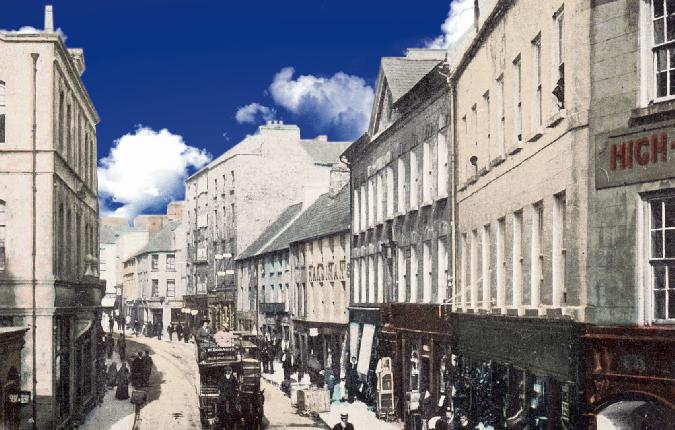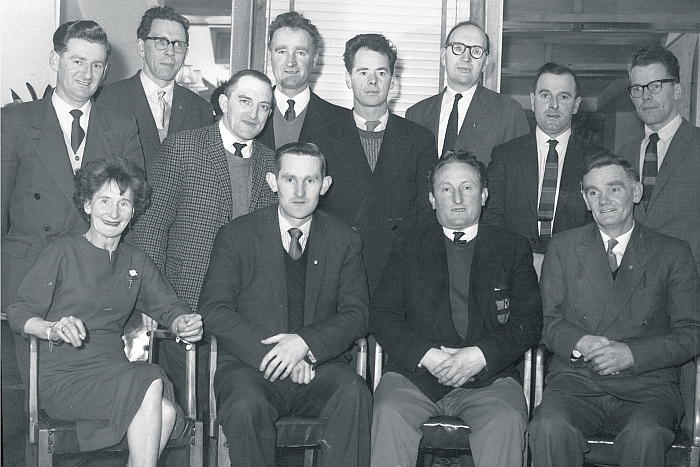Archive News
January 31, 2013

Date Published: 30-Jan-2013
1913
Shots at midnight
Further particulars regarding the shooting outrage at Castlelambert have come to light during the week. It appears that the night was remarkably bright, and that the figure of a man could be discerned a long distance off.
A police patrol was ambushed near Caulfield’s house, and saw the attacking party approach, and at the same moment several shots were discharged at the house. The police got ready to fire in an instant, and as the firing party passed out through a gateway near the house, the police discharged several shots.
One of the men was seen to fall, and when the police went in the direction where the man was supposed to have fallen, they discovered a gate post, which had received most of the volleys fired.
Owing to the incident which took place at Craughwell, they did not deem it advisable to press too hard on the retreating foe. Besides, they discovered that in a hill some distance away a number of men were concentrated, probably to cover the retreat, so the patrol had to await reinforcements before moving into the mountain.
The attack was made with great daring, and the party had a hair breadth escape.
1938
Storm strikes
Galway felt the full brunt of the second storm within a fortnight which swept the West coast on Friday night. A strong gale accompanied by heavy rain and lightning was the first indication of the ensuing storm, which lasted into the early hours of Saturday morning.
Lashing rain swept the streets clear of pedestrians, and the wind, which at times reached a velocity of nearly a mile a minute, tore advertising slogans from outside business houses. Coupled with this, flying slates and masonry made walking positively dangerous, so that Galway around midnight assumed a ghost-like appearance.
A large tree in Newcastle-road was struck by lightning, and when falling, it hit the overhead electric cables, disconnecting many lights in the district.
Falling slates and masonry caused blackouts in Taylor’s Hill, Salthill and the docks districts. Working under appalling weather conditions, special men from the Electricity Supply Board had all the wires in the affected areas repaired inside half an hour.
The wind-swept Corrib overflowed its banks at many points, and in Mill-street, Galway, flooded the road but did not enter the houses.
Tuam strike
A strike began on the Tuam building clearance scheme on Wednesday evening. Carpenters and joiners are not affected. The cause of the dispute is the allegation made by the carters of sand that the contractors, Messrs. Bermingham and Sons, Galway, have not carried out their agreement with the men’s Union to give the drawing of fifty per cent of the sand required in the buildings to the carters, and that the contractors employed lorries which drew more than fifty per cent of the sand. The services of some of the carters were dispensed with recently and the Union appealed to the Town Commissioners to try and have the carters reinstated.
The Commissioners were sympathetic, but their efforts failed and the contractors alleged in a letter to the Board that the carters had actually drawn much more than their share. The contract is for 82 houses under a clearance order made by the Town Commissioners being built at Cloontoo and Galway roads. About forty men are affected by the strike.
For more, read this week’s Connacht Tribune.
Galway in Days Gone By
The way we were – Protecting archives of our past

People’s living conditions less than 100 years ago were frightening. We have come a long way. We talk about water charges today, but back then the local District Councils were erecting pumps for local communities and the lovely town of Mountbellew, according to Council minutes, had open sewers,” says Galway County Council archivist Patria McWalter.
Patria believes we “need to take pride in our history, and we should take the same pride in our historical records as we do in our built heritage”. When you see the wealth of material in her care, this belief makes sense.
She is in charge of caring for the rich collection of administrative records owned by Galway County Council and says “these records are as much part of our history as the Rock of Cashel is. They document our lives and our ancestors’ lives. And nobody can plan for the future unless you learn from the past, what worked and what didn’t”.
Archivists and librarians are often unfairly regarded as being dry, academic types, but that’s certainly not true of Patria. Her enthusiasm is infectious as she turns the pages of several minute books from Galway’s Rural District Councils, all of them at least 100 years old.
Part of her role involved cataloguing all the records of the Councils – Ballinasloe, Clifden, Galway, Gort, Loughrea, Mountbellew, Portumna and Tuam. These records mostly consisted of minutes of various meetings.
When she was cataloguing them she realised their worth to local historians and researchers, so she decided to compile a guide to their content. The result is For the Record: The Archives of Galway’s Rural District Councils, which will be a valuable asset to anybody with an interest in history.
Many representatives on these Councils were local personalities and several were arrested during the political upheaval of the era, she explains.
And, ushering in a new era in history, women were allowed to sit on these Rural District Councils – at the time they were not allowed to sit on County Councils.
All of this information is included in Patria’s introductory essay to the attractively produced A4 size guide, which gives a glimpse into how these Rural Councils operated and the way political thinking changed in Ireland during a short 26-year period. In the early 1900s, these Councils supported Home Rule, but by 1920, they were calling for full independence and refusing to recognise the British administration.
“I love the tone,” says Patria of the minutes from meetings. “The language was very emotive.”
That was certainly true of the Gort Rural District Council. At a meeting in 1907, following riots in Dublin at the premiere of JM Synge’s play, The Playboy of the Western World the councillors’ response was vehement. They recorded their decision to “protest most emphatically against the libellous comedy, The Playboy of the Western World, that was belched forth during the past week in the Abbey Theatre, Dublin, under the fostering care of Lady Gregory and Mr Yeats. We congratulate the good people of Dublin in howling down the gross buffoonery and immoral suggestions that are scattered throughout this scandalous performance.
For more from the archives see this week’s Tribunes here
Archive News
Galway have lot to ponder in poor show

Date Published: 23-Jan-2013
SLIGO 0-9
GALWAY 1-4
FRANK FARRAGHER IN ENNISCRONE
GALWAY’S first serious examination of the 2013 season rather disturbingly ended with a rating well below the 40% pass mark at the idyllic, if rather Siberian, seaside setting of Enniscrone on Sunday last.
The defeat cost Galway a place in the FBD League Final against Leitrim and also put a fair dent on their confidence shield for the bigger tests that lie ahead in February.
There was no fluke element in this success by an understrength Sligo side and by the time Leitrim referee, Frank Flynn, sounded the final whistle, there wasn’t a perished soul in the crowd of about 500 who could question the justice of the outcome.
It is only pre-season and last Sunday’s blast of dry polar winds did remind everyone that this is far from summer football, but make no mistake about it, the match did lay down some very worrying markers for Galway following a couple of victories over below par third level college teams.
Galway did start the game quite positively, leading by four points at the end of a first quarter when they missed as much more, but when Sligo stepped up the tempo of the game in the 10 minutes before half-time, the maroon resistance crumbled with frightening rapidity.
Some of the statistics of the match make for grim perusal. Over the course of the hour, Galway only scored two points from play and they went through a 52 minute period of the match, without raising a white flag – admittedly a late rally did bring them close to a draw but that would have been very rough justice on Sligo.
Sligo were backable at 9/4 coming into this match, the odds being stretched with the ‘missing list’ on Kevin Walsh’s team sheet – Adrian Marren, Stephen Coen, Tony Taylor, Ross Donovan, David Kelly, David Maye, Johnny Davey and Eamon O’Hara, were all marked absent for a variety of reasons.
Walsh has his Sligo side well schooled in the high intensity, close quarters type of football, and the harder Galway tried to go through the short game channels, the more the home side bottled them up.
Galway badly needed to find some variety in their attacking strategy and maybe there is a lot to be said for the traditional Meath style of giving long, quick ball to a full forward line with a big target man on the edge of the square – given Paul Conroy’s prowess close to goal last season, maybe it is time to ‘settle’ on a few basics.
Defensively, Galway were reasonably solid with Gary Sice at centre back probably their best player – he was one of the few men in maroon to deliver decent long ball deep into the attacking zone – while Finian Hanley, Conor Costello and Gary O’Donnell also kept things tight.
For more, read this week’s Connacht Tribune.
Archive News
Real Galway flavour to intermediate club hurling battle in Birr

Date Published: 23-Jan-2013
images/files/images/x3_Courthouse.jpg












